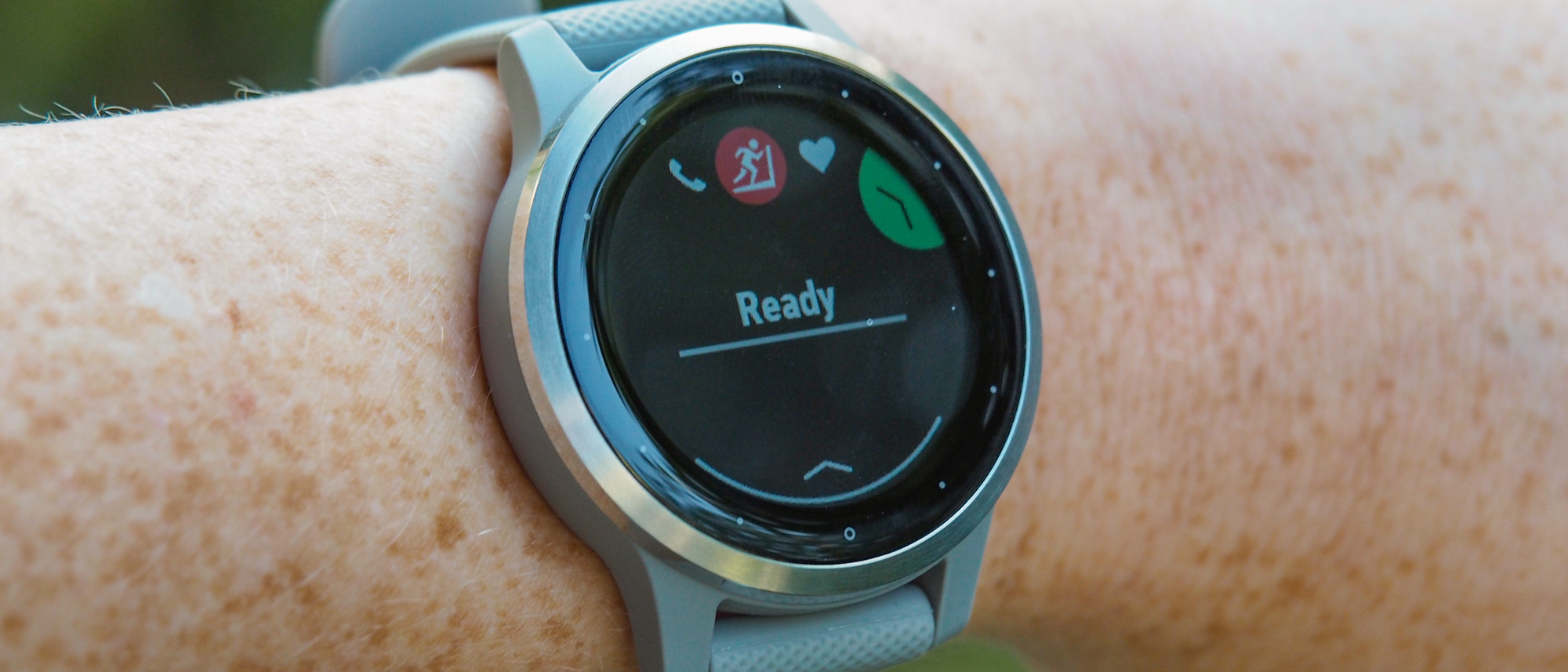Tom's Guide Verdict
This well-rounded, fitness-focused smartwatch improves upon the Vivoactive 3 with more bells and whistles for tracking health stats and workouts, plus offline Spotify playback.
Pros
- +
Comes in two sizes
- +
Built-in music storage with Spotify support
- +
Two-button navigation
Cons
- -
Occasional syncing issues
- -
Convoluted app installation process
Why you can trust Tom's Guide
Garmin’s lineup of GPS watches offers something for everyone. The Vivoactive line's niche is taking on Apple with health and fitness features and a touchscreen display.
The 45-millimeter Garmin Vivoactive 4 and 40-mm 4S, both $349, include almost every feature you could want from a smartwatch — music, GPS, heart rate — plus all of the excellent fitness-tracking capabilities that Garmin does best.
The Vivoactive 4 has its flaws. For iPhone owners, the Apple Watch Series 6 is second to none. But for many people, the Vivoactive 4 is one of the best fitness trackers and the best Garmin watch with advanced features you can buy.
Garmin Vivoactive 4 review: Design and display
There are two major design differences between the Vivoactive 4 and its predecessor, the Vivoactive 3. The first is size: Garmin’s newest smartwatch comes in two sizes, a 40-mm option and a much larger 45-mm model. The Vivoactive 3 was offered in just one size, 43-mm. That makes the Vivoactive 4 more appealing to a wider variety of people. I tested the 40-mm version, which Garmin calls the Vivoactive 4S, and found it to be the perfect size for my small wrist.
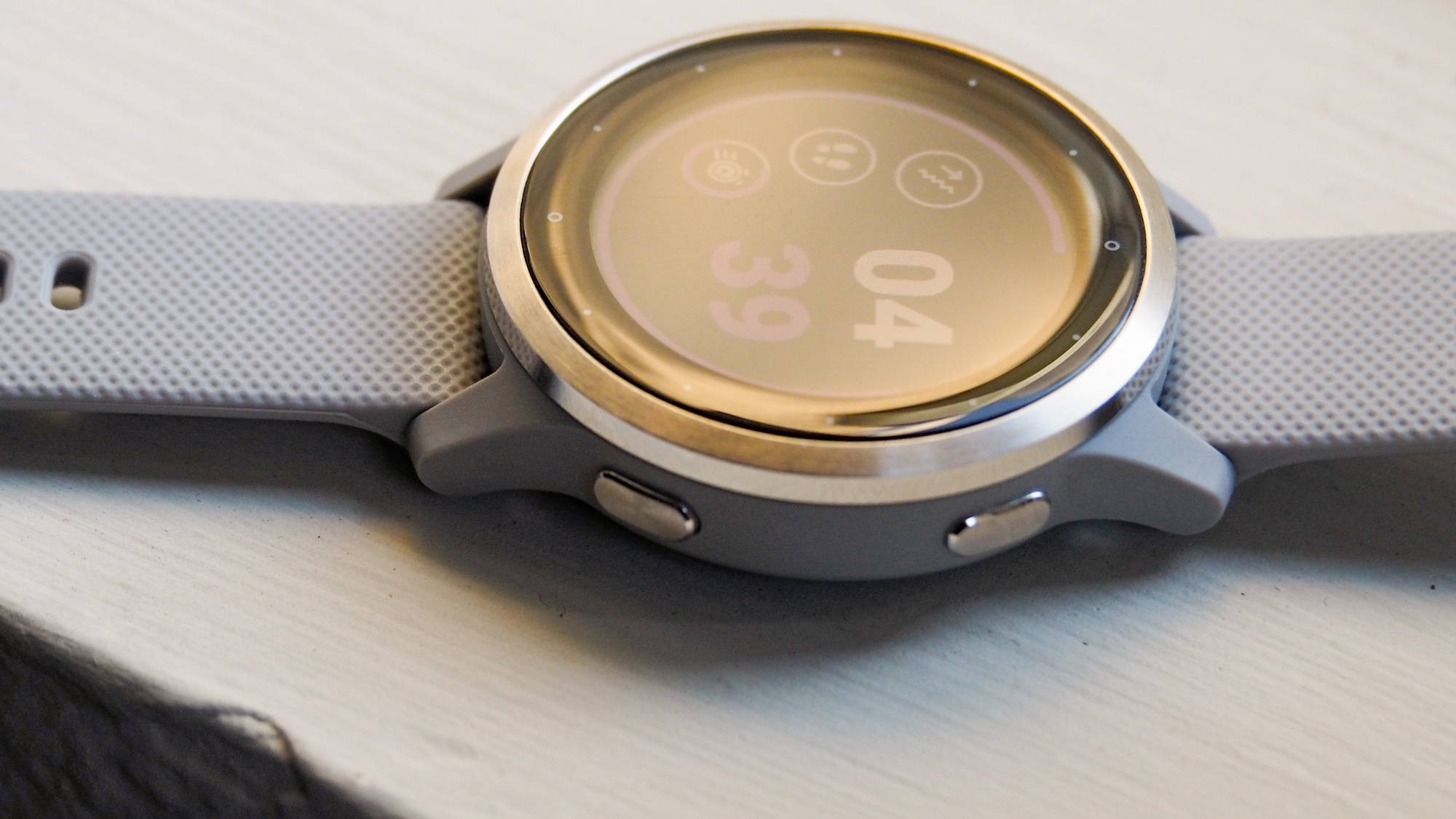
This is the best fitness smartwatch you can buy.
The second design change is the addition of second side button. This button is a shortcut for your preferred exercises, and also acts as a start/stop button so you don’t have to jab at the touchscreen with sweaty fingers to pause or end your workout.
The lower side button acts as a back button when you’re in an app. A long press of this button also gives you quick access to watch faces, clocks, your activity history and the settings menu, which is where your apps and widgets live. I wish that button served as a shortcut to the watch’s app drawer. Instead, Garmin’s watches and the Garmin Connect app that pairs with them offer so many options that figuring out where they are can be an exercise in frustration.

The round LCD touchscreen remains unchanged from the Vivoactive 3. It’s still plenty bright enough to see when running outside, and the touchscreen is responsive. If you’re looking for a mid-sized, 43-mm Garmin smartwatch with an AMOLED display, the $399 Garmin Venu, also out now, is the Goldilocks between the Vivoactive 4 and 4S. However, that watch offers shorter battery life due to its more power-hungry display.
Get instant access to breaking news, the hottest reviews, great deals and helpful tips.
Garmin Vivoactive 4 review: Fitness features
The Vivoactive 4 comes with 20 pre-loaded exercises that you can launch and track by pressing the upper side button. The watch is particularly useful for distance runners, because you can create customized training plans in the Garmin Connect desktop app and see advanced metrics. It's one of the best running watches right now.

But the Vivoactive 4 is also useful for those who prefer other types of workouts. Garmin added on-screen yoga, Pilates, cardio and strength-training exercises to the watch, so you can follow guided animations. This is particularly useful for Pilates and yoga, because you can each pose modeled. The animations are more helpful than the stick figures you normally see on a smartwatch exercise app. You can also create your own yoga and Pilates workouts in the Garmin Connect app. As a person whose Pilates practice has been lacking in recent months, I’m hopeful Garmin can ease me back into it so I don’t have to shell out extra cash for pricey boutique classes.
MORE: Best Sport Headphones: Running and workout earbuds
Otherwise, the Vivoactive 4 is just as advanced as other Garmin watches when it comes to tracking outdoor running and biking. The watch took less than 30 seconds to lock onto a GPS signal — sometimes less than 10 seconds — and afterward you can see a map of your route logged in the Garmin Connect app. You can also follow coached running plans if you’re training for a race, which is why many people buy Garmins. This is the best fitness smartwatch you can buy.
Garmin Vivoactive 4 review: Health and sleep-tracking features
Garmin is taking the Apple approach to its Vivoactive line by making its newest watch more of a personal health companion. With the addition of respiration tracking and a pulse oximeter for tracking blood oxygen saturation levels, the Vivoactive 4 offers a level of detail you don’t get from older Garmin watches, particularly about sleep.
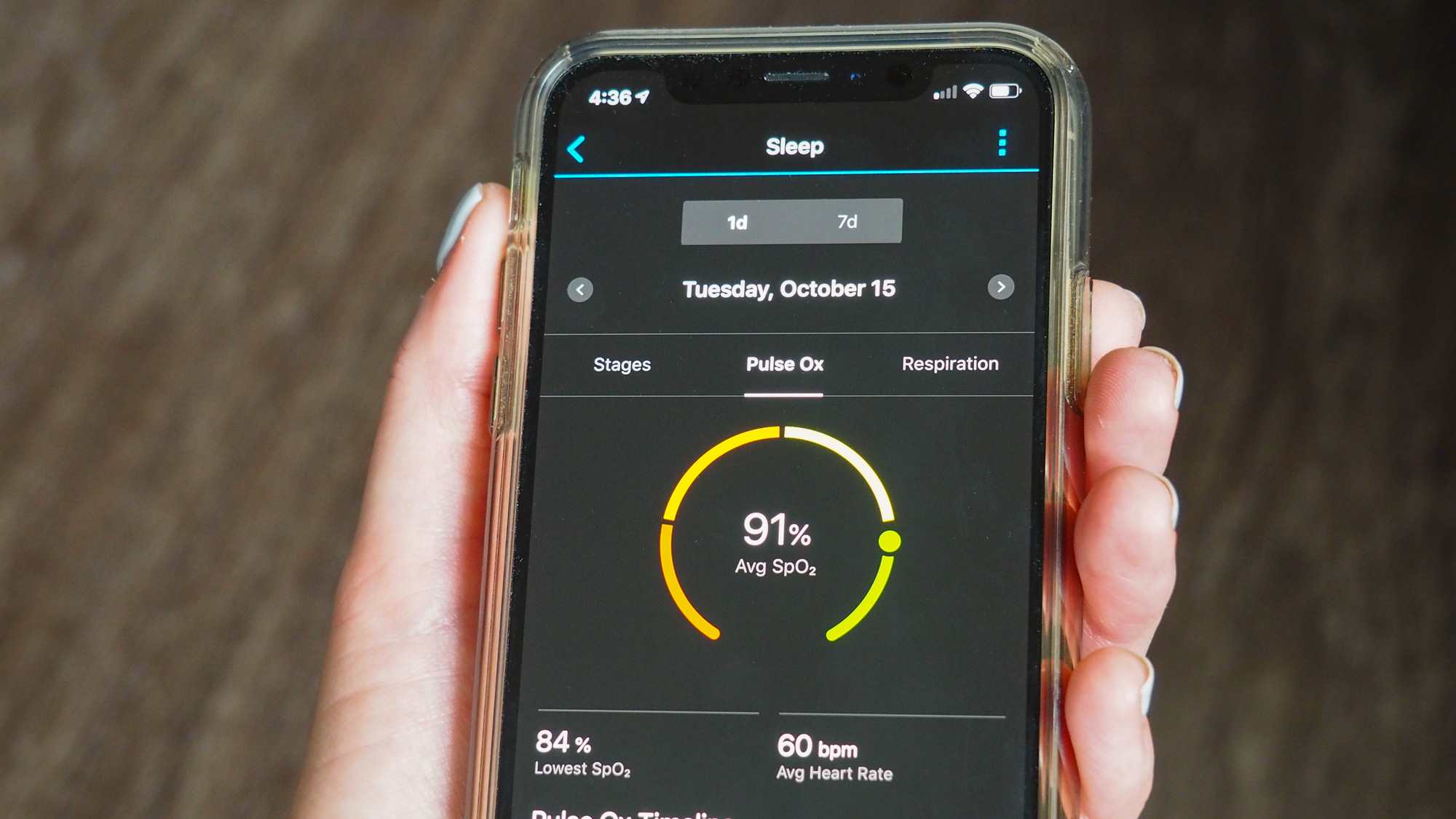
If you turn on the pulse ox sensor in the Garmin Connect app, you’ll see SpO2 readings as part of your sleep log every morning. After a few nights of tracking my blood oxygen saturation levels and getting similar numbers (I averaged 90-95%, which is normal), I decided to turn off the sensor to extend the watch’s battery life.
The Vivoactive 4 doesn’t have clearance from the U.S. Food and Drug Administration to diagnose any conditions based on the information it collects, but perhaps one day Garmin will be able to tell you if you have sleep apnea or other serious health conditions using the data on your heart rate, respiration and blood oxygenation levels.
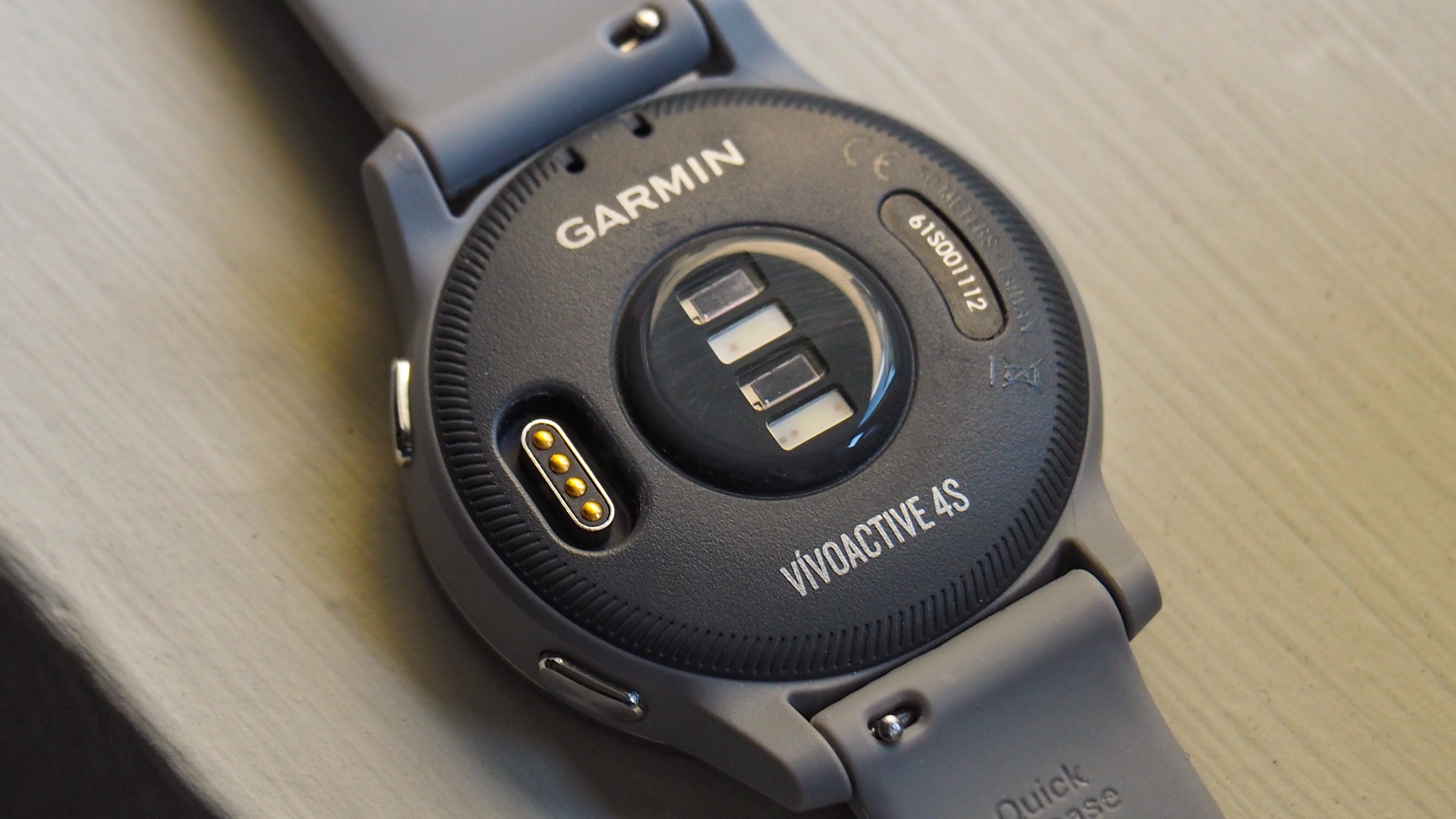
Given all of the Vivoactive 4’s sensors, I found it strange that the watch would log a night of sleep even when I didn’t wear it to bed. One night I forgot to put the device back on after a shower, and when I woke the next morning and synced the watch to my phone, it calculated 11 hours of deep sleep. The device should be able to tell when I’m not wearing it. But when I am wearing the watch to bed, its sleep-tracking dashboard in the Garmin Connect app accurately breaks down my sleep and wake times, plus time spent in light, deep and REM sleep. I found it comparable to Fitbit’s sleep-tracking functionality.
Garmin Vivoactive 4 review: Battery life
Garmin has always prioritized battery life more than other smartwatch makers, and the Vivoactive 4 continues in that tradition. The Vivoactive 4s lasted about 4 days with music playback and GPS activated during multiple 3.6-mile runs in my testing, and can last up to 7 days in smartwatch mode. The larger Vivoactive 4 lasts about eight days on a charge, Garmin says. (I didn’t test that version.) The Apple Watch Series 5 lasts just 18 hours on a charge, so if battery life is important to you, the Vivoactive 4 is worth a look.
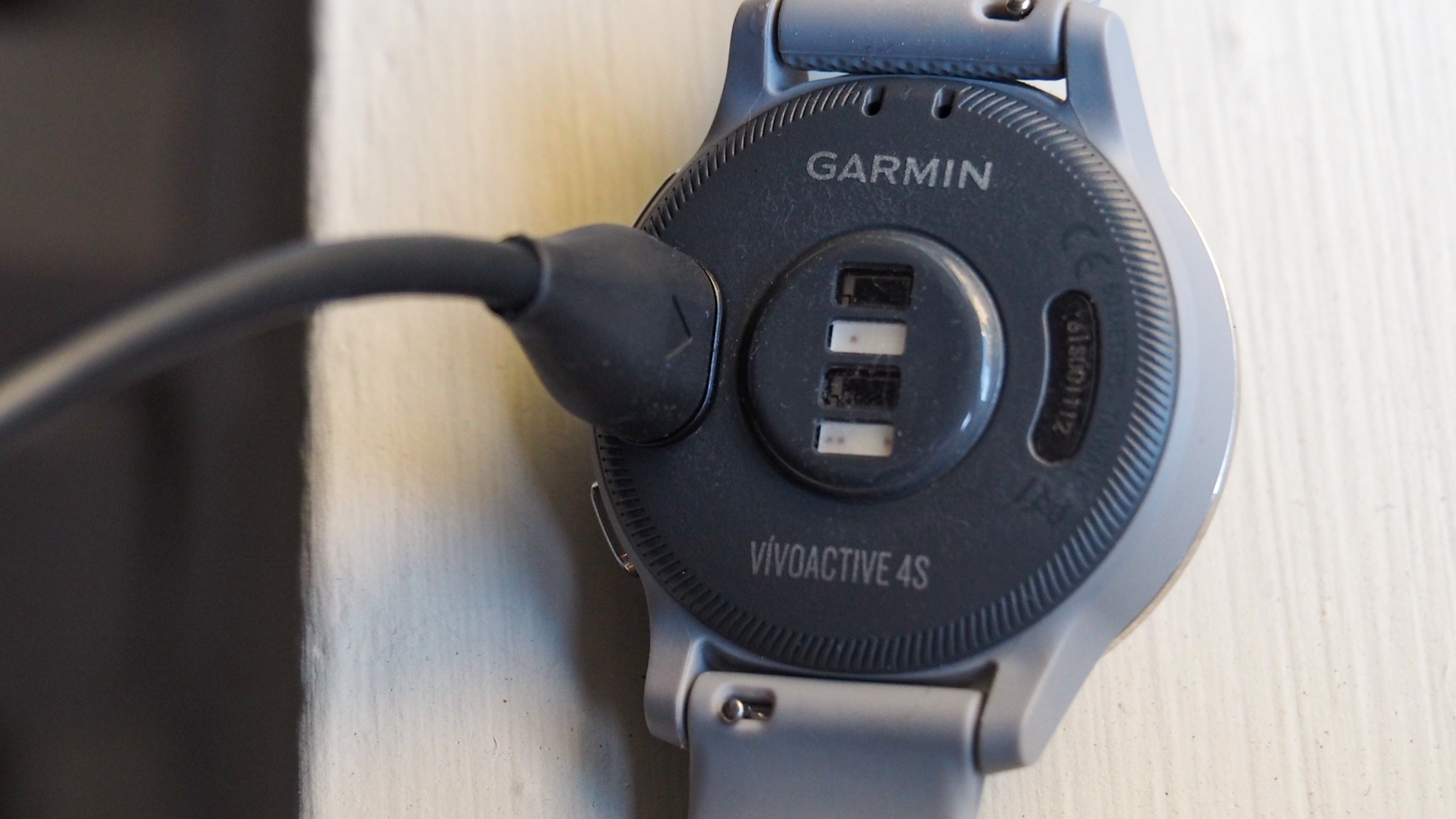
The pulse oximeter sensor severely affects battery life. If you allow the sensor to run day and night through separate settings in the Garmin Connect app, the watch dies after two days.
It’s cool to see the pulse ox data in the app, especially logged as part of your sleep data in the app every morning, but unless you’re concerned that you might have a sleep disorder that affects your breathing, such as sleep apnea, it’s not worth the battery hit to keep it on.
Garmin Vivoactive 4 review: Spotify’s a bright spot
Unlike the Vivoactive 3, the Vivoactive 4 includes on-board music storage without having to pay a premium for a special edition. Spotify is one of music services that allows you to download playlists to the watch (with a paid Spotify Premium account).
But if you’ve used any other smartwatch, you’ll find the process of installing apps, widgets or watch faces on the Vivoactive 4 a little unintuitive. Downloading Spotify on the watch took several minutes — not the actual download time, but the process itself. First, you have to open the Garmin Connect app on your phone. Then you have to select your device by tapping the image of it at the top of the app. Then select Music. From there, you can choose from Spotify, Deezer or Amazon Music (if anyone out there uses the latter two). Then you have to install Spotify on the watch.
MORE: Best sports watches
But the app doesn’t simply pop up on the watch after downloading. You then have to press the lower side button, tap the Settings menu (behind the gear icon), scroll down to Music, select Music Providers and pick Spotify. But you’re not done yet! Then you have to jump back over to your phone, log into your Spotify account via the Garmin Connect app to link the two, and then you’ll be able to download your playlists to the Vivoactive 4. Maybe. I had to log into Spotify four times, then close the Garmin Connect app twice, before it finally stuck.
To find and install other third-party apps on the watch, from maps to fitness, you have to download a separate app, Garmin’s Connect IQ Store, on your phone. There you can browse from a curated selection of available apps, widgets and watch faces. There are few big names to choose from, especially compared to the Apple Watch app store, and the fact that you need two smartphone apps to gain full functionality of this watch is cumbersome.
Garmin Vivoactive 4 review: Verdict
Garmin continues to improve on what it does best, which is track fitness. It doesn’t offer quite as seamless an integration to your smartphone as the Apple Watch does with iPhones or the Galaxy Watch Active 2 does with Samsung’s Galaxy phones, but it’s more advanced than both those watches at tracking workouts.
But the Apple Watch Series 6 is just $50 more, and can diagnose atrial fibrillation, take phone calls, send texts and has a well-stocked app store. The Galaxy Watch Active 2 is $50 less and will eventually be able to detect irregular heart rhythm in addition to making calls, sending messages and tracking workouts (though its GPS isn’t as spot-on as Garmin’s).
The Vivoactive 4 is a little pricey for what it offers compared to its competitors. But if fitness-tracking is your highest priority, and smartphone integration secondary, Garmin’s watches can’t be beat. The Vivoactive 4 is more useful as a lifestyle smartwatch than Garmin’s Forerunner lineup, which lack touchscreens. For a more premium smartwatch look, the $399 Garmin Venu takes direct aim at the Apple Watch Series 5 with an AMOLED display and all of the fitness features that the Vivoactive 4 offers (though the screen chugs more battery than the Vivoactive’s transflective display).
The Vivoactive 4 is a solid GPS watch with a better combination of features than its predecessor. In an increasingly competitive market, Garmin is playing to win.
Caitlin is a Senior editor for Gizmodo. She has also worked on Tom's Guide, Macworld, PCWorld and the Las Vegas Review-Journal. When she's not testing out the latest devices, you can find her running around the streets of Los Angeles, putting in morning miles or searching for the best tacos.
